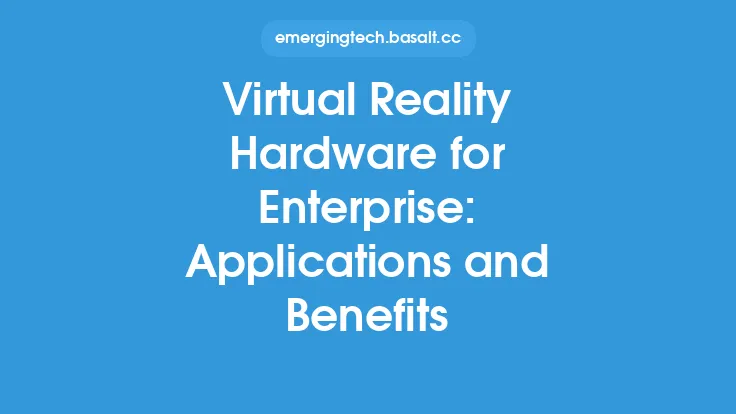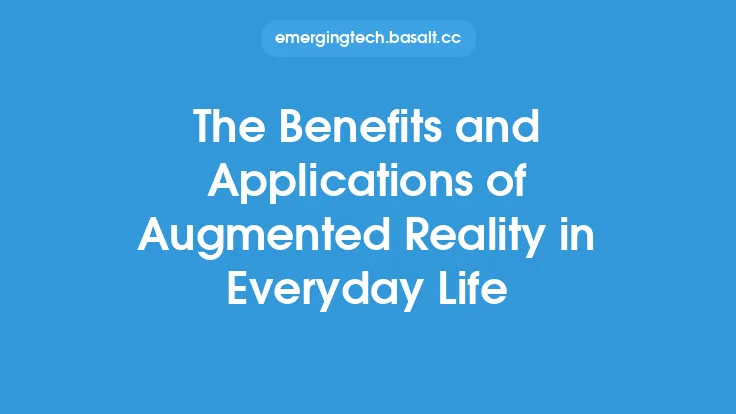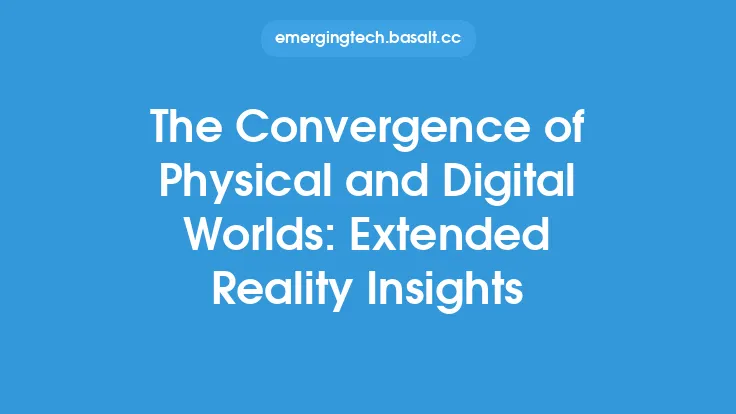The concept of Extended Reality (XR) has been gaining significant attention in recent years, and for good reason. This technology has the potential to revolutionize the way we interact with the world around us, and its applications are vast and varied. In this article, we will delve into the world of Extended Reality, exploring its different forms, applications, and benefits.
Introduction to Extended Reality
Extended Reality is a term that encompasses a range of technologies, including Virtual Reality (VR), Augmented Reality (AR), and Mixed Reality (MR). These technologies are designed to enhance or alter our experience of the world, by overlaying digital information onto the real world, or by creating entirely new, virtual environments. XR has the potential to transform industries such as education, healthcare, entertainment, and many others, and its impact is already being felt.
Types of Extended Reality
There are several types of Extended Reality, each with its own unique characteristics and applications. Virtual Reality (VR) is a fully immersive technology, which creates a completely virtual environment for the user to interact with. This can be achieved through the use of a headset or other device, and is often used in gaming and entertainment applications. Augmented Reality (AR) is a technology that overlays digital information onto the real world, using a device such as a smartphone or tablet. This can be used to provide additional information about the environment, or to enhance the user's experience in some way. Mixed Reality (MR) is a hybrid of VR and AR, which combines elements of both to create a more interactive and immersive experience.
Applications of Extended Reality
The applications of Extended Reality are vast and varied, and are being explored in a wide range of industries. In education, XR can be used to create interactive and immersive learning experiences, which can help to engage students and improve their understanding of complex concepts. In healthcare, XR can be used to provide training for medical professionals, or to help patients overcome phobias or anxieties. In entertainment, XR can be used to create new and innovative forms of storytelling, such as virtual reality movies or augmented reality games.
Benefits of Extended Reality
The benefits of Extended Reality are numerous, and can be seen in a variety of different areas. One of the main benefits of XR is its ability to increase engagement and interaction, by providing a more immersive and interactive experience. This can be particularly useful in education and training applications, where it can help to improve knowledge retention and understanding. XR can also be used to enhance the user's experience, by providing additional information or context about the environment. This can be particularly useful in applications such as tourism or retail, where it can help to provide a more personalized and interactive experience.
Technical Requirements of Extended Reality
The technical requirements of Extended Reality are significant, and require a range of different technologies and devices. These can include high-performance computers, advanced graphics cards, and specialized software and hardware. The development of XR applications also requires a range of different skills and expertise, including programming, 3D modeling, and user experience design. In addition, the deployment of XR applications can require significant infrastructure and support, including high-speed networks and advanced data storage systems.
Challenges and Limitations of Extended Reality
Despite the many benefits and applications of Extended Reality, there are also several challenges and limitations that need to be addressed. One of the main challenges is the cost and accessibility of XR technology, which can be prohibitively expensive for many individuals and organizations. There are also concerns about the potential health and safety risks of XR, such as eye strain and motion sickness. Additionally, there are challenges related to the development and deployment of XR applications, including the need for specialized skills and expertise, and the requirement for significant infrastructure and support.
Future of Extended Reality
The future of Extended Reality is exciting and rapidly evolving, with new technologies and applications being developed all the time. One of the main areas of development is the creation of more advanced and sophisticated XR devices, such as standalone headsets and advanced augmented reality glasses. There is also a growing focus on the development of more interactive and immersive XR experiences, using technologies such as artificial intelligence and machine learning. As XR technology continues to evolve and improve, we can expect to see new and innovative applications in a wide range of industries, from education and healthcare to entertainment and beyond.
Conclusion
In conclusion, Extended Reality is a powerful and rapidly evolving technology, with the potential to transform a wide range of industries and applications. From education and healthcare to entertainment and beyond, XR has the potential to increase engagement and interaction, enhance the user's experience, and provide new and innovative forms of storytelling and interaction. While there are challenges and limitations to be addressed, the benefits and applications of XR are numerous, and its future is exciting and rapidly evolving. As XR technology continues to improve and advance, we can expect to see new and innovative applications in a wide range of areas, and its impact is likely to be felt for years to come.





